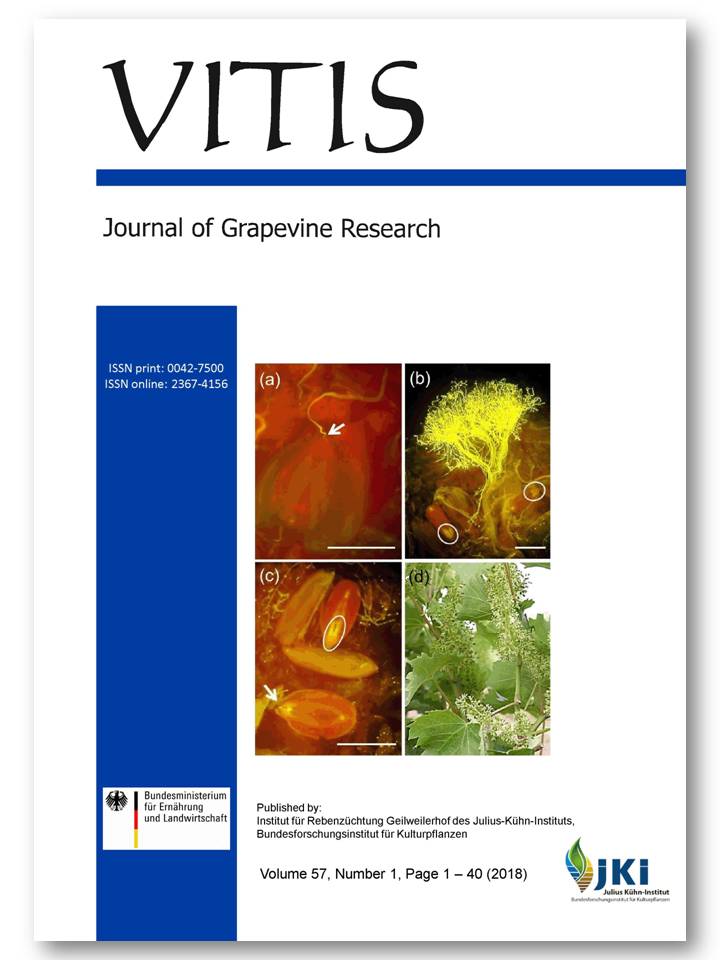Multi-annual comparisons demonstrate differences in the bunch rot susceptibility of nine Vitis vinifera L. 'Riesling' clones
DOI:
https://doi.org/10.5073/vitis.2018.57.17-25Keywords:
Botrytis cinerea, bunch rot, climate change adaptation, 'Riesling' clones, pesticide reduction, planting material, Vitis vinifera.Abstract
Botrytis bunch rot is a major fungal disease of grapevines, and causes severe economic damage worldwide. Under humid climatic conditions, the development of bunch rot on grapes cannot be suppressed completely. Selection of planting material with lower bunch rot susceptibility represents one of the most efficient long-term tools in the complex bunch rot minimisation strategy. The present investigation conducted over four consecutive years (2013-2016) under the environmental conditions of the Moselle valley aimed at (i) detecting consistent differences in the bunch rot susceptibility within a group of nine commercially available Vitis vinifera L. 'White Riesling' clones, (ii) investigating potential underlying causes and (iii) deriving recommendations for 'Riesling' clone selection in practical viticulture. Disease severity and grape maturity (total soluble solids) progress could be well simulated by sigmoidal curves (R2 > 0.89; P < 0.038). On average of all four years, the dates when 5 % bunch rot disease severity were reached differed significantly by 9 days between the clone with the earliest epidemic (Trier 34) and the clone with the latest epidemic (Heinz 65). Multi-annual results enabled a classification of the nine clones according to (i) their relative bunch rot susceptibility as well as (ii) their relative precocity. Based on this, practical recommendations concerning a targeted clone selection as an integral long-term tool (i) in Integrated Pest Management contributing to pesticide reduction in viticulture as well as (ii) in the viticultural climate change adaptation strategy were derived.
Downloads
Additional Files
Published
Issue
Section
License
The content of VITIS is published under a Creative Commons Attribution 4.0 license. Any user is free to share and adapt (remix, transform, build upon) the content as long as the original publication is attributed (authors, title, year, journal, issue, pages) and any changes to the original are clearly labeled. We do not prohibit or charge a fee for reuse of published content. The use of general descriptive names, trade names, trademarks, and so forth in any publication herein, even if not specifically indicated, does not imply that these names are not protected by the relevant laws and regulations. The submitting author agrees to these terms on behalf of all co-authors when submitting a manuscript. Please be aware that this license cannot be revoked. All authors retain the copyright on their work and are able to enter into separate, additional contractual arrangements.



